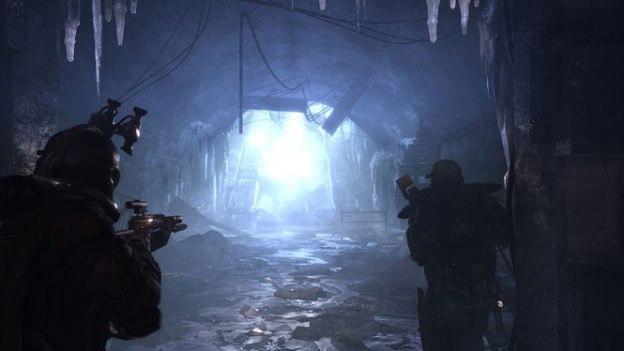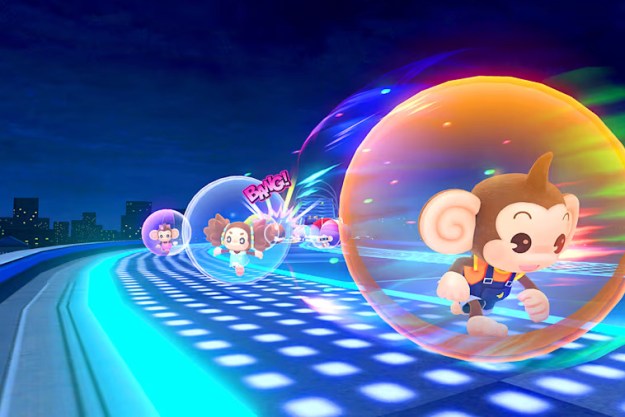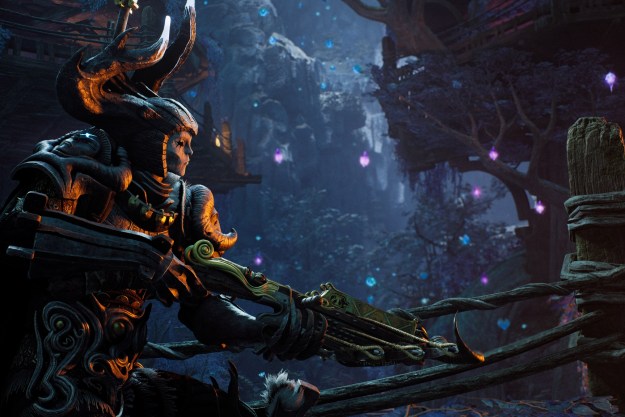
Would you kill Jar Jar Binks if you had the chance? Reconciling an author’s artistic vision with one’s own beliefs about how a particular piece of fiction should proceed is among the most difficult burdens a committed fanperson bears. You want things to turn a certain way, but the creator decides for whatever reason to do things differently. The geek-centric Internet is built around flinging complaints at such changes. It doesn’t have to be that way though, not if you’re Dmitry Glukhovsky.

The Russian novelist is the principal creative voice behind the Metro series, which started life on the Internet in 2002 as Metro 2033. His free-to-read debut ebook offered more than just a story- it created a universe. One that quickly grew beyond the relatively limited scope that first hatched in a young Moscow boy’s mind.
“It’s all based on the first book I wrote and published online for free 11 years ago,” the author tells Digital Trends. “The inspiration comes from my passion for the subway of Moscow and from my passion for apocalyptic stories. I grew up in Moscow… and I used to take daily rides on the subway. One day I discovered that the subway of Moscow is the world’s biggest nuclear shelter. It was actually constructed, planned, engineered AS a shelter, a huge refuge. So I just started imagining what would have happened if the World War III for which the [Metro] was actually preparing broke out.”
Opened in 1935, the Moscow Metro now consists of 188 stations connecting 194 miles of tunnel. Its 12 lines provide transport to more than 7 million people per day. Unconfirmed reports over the years also hint at the existence of a second, deeper Metro line for the government’s elite to use. Known as Metro-2, or D6, the rumor holds that this secret network runs in parallel to the Moscow Metro.
This is the platform on which Metro 2033 was founded. Glukhovsky self-published web release attracted more than 2 million readers before a single physical copy was ever printed or sold. By 2005, hard copies of the book were released for sale in Russia. Since then, Metro 2033 has gone on to be released in more than 20 countries, and in multiple languages. Naturally, Glukhovsky pursued a release in the United States as well… only to be turned down by publisher after publisher.
“The arrogance I confronted was amazing,” he says of his meetings in the States. “They said ‘American readers do not want that. It’s too weird, too strange, too exotic. It’s not set in the U.S., so American readers will not read it.’ So I decided to go with self-publishing here. I put it on Print-on-Demand on Amazon as an ebook. What I care about is for people to read what I created.”
“The arrogance I confronted was amazing.”
“They came to me quite a long time before the book was even published, when it was still an Internet project,” Glukhovsky says of his early talks with 4A. “A website with text, free to read – they discovered it there. The creative lead read the book overnight and wrote me in the morning. Then it took four or five more years to actually make the game.”
The THQ-published adaptation of Metro 2033 introduced gamers to the author’s dark, unsettling post-apocalyptic world, as seen primarily from the cramped confines of Moscow’s underground rail system. Metro: Last Light, the follow-up from Ukrainian dev 4A Games, arrived this week, capping off the chain of events that the first game set in motion. Taken together, the two releases amount to what in our review of the recent game referred to as “a masterful story, artfully told.”

Glukhosvky describes his approach to crafting a follow-up story that he hadn’t technically written a book for. “The first game… was based precisely on the book of the same name. The second game, I wrote the plot and the dialogue, which is quite abundant. It has a very sophisticated storyline with different plotlines coming together at some points and lots of side characters that are not essential for the main gameplay, but help create a real, breathing universe. So I created 100 or more side characters who are there sharing with each other, or with you if you care to listen, their dreams, hopes, fears, desperation. You know. Telling stories and scary tales.”
There is a book called Metro 2034 that indirectly follows the events of 2033, although it has yet to be translated for an English release. It isn’t a sequel at all, however. Rather, the book shares anecdotes from Metro denizens as they reminisce on their past life up above, on the surface. “It’s not adaptable into a game,” Glukhovsky says of 2034. “It’s mainly stories of characters remembering their days before the war. Dreaming about possible futures. It helps flesh out the world, but it’s not suitable for a video game, and definitely not for a shooter.”
A third book in the series due out in Russia in December titled Metro 2035 will continue the tale of the protagonist Artyom, and share the same storyline as Metro: Last Light. Yet it’s important to understand 2034‘s place within the Metro fiction, as this idea of unrelated spin-off stories is at the heart of Glukhovsky broader vision for the franchise and how it should be shaped. “After writing 2034, I appealed to authors across the world to help create this universe and to write their own stories set elsewhere,” he explains. “Maybe also in the subway of Moscow, but wherever. It’s the same world that I describe in my book and in the game, but my book just focuses on the subway of Moscow. It doesn’t speak of St. Petersburg, or Siberia, or the north, or Europe, or the States.”
”I appealed to authors across the world to help create this universe and to write their own stories set elsewhere”
Is it still fan-fiction when it’s also considered canon? That’s the premise here, and it’s been a successful one so far.
“Over three years we’ve got 35 novels… in Russian,” Glukhovsky says. “Then we’ve got a novel written by… quite a known Italian author of noir and thrillers, an amazing story, absolutely. Very emotional and very well-written. Set in Italy, Rome and Venice. It’s the story of a Catholic monk traveling from Rome to Venice on a special mission given to him by the lost Cardinal. A very Italian thing, a very Catholic thing, very strange and interesting and completely different.”
Glukhovsky admits here that he would love to see this particular story adapted into a game of its own. “At one part of the story he’s traveling in a huge quarry truck, like a Caterpillar, that’s been turned into a fortress by some Christian fanatic madman,” he says. “He’s traveling… and seeing devastation and cannibals and monsters along the way. It could be a beautiful gothic video game, and I would love to see it and play it.”
There are other examples as well. One story is from a young British author, another by an accomplished sci-fi author in Cuba, set in the catacombs of Havana. There are detective stories. Thrillers. Romances. The post-apocalypse that Glukhovsky envisioned is a launching off point. As long as nobody messes with the specific canon set forth in his stories, they can actively contribute tales of their own to this universe.

“That was the idea: letting people from different cultures and languages contribute the culture and the language they have, to create as multi-faceted and diverse a world as can be. Everyone is bringing something new,” he says.
Metro continues to grow. It’s too early to tell at this point if Deep Silver intends to commit to another follow-up. Reviews are certainly positive though. Authors around the world continue to tug at the fictional threads of Glukhovsky’s world from varying perspectives, but there’s nothing keeping Metro restricted to only books and games. Hollywood wants in on this action as well.
“The movie rights were optioned by MGM for Metro 2033 and the process took three years or more: finding the right producer, negotiating with producers, the producers trying to get a script, pitching it to studios, getting a reaction from the studios, re-working the script,” Glukhovsky tells us. “It’s a very long process. You get very excited in the beginning, then you lose your faith in it from waiting too long. When it finally happens, you’re like ‘Oh, okay. So it happens. Great.'”
The studio’s plan with the 2033 adaptation is to shift the setting to something more familiar to American audiences. “MGM wants to reset it in the States. Reset it in Washington DC,” Glukhovsky says. “It has parts of the setting that we have [in Russia]. We have the Kremlin, they have the Capitol. We have the Lenin Library, they have the Library of Congress. And the Metro of Washington, DC is called the Metro, like the Metro of Moscow.”
Once again, you would expect the original creator to balk at such a brazen change, but Glukhovsky is surprisingly accepting. “The idea is, it’s a text. It’s a living creature,” he says of his work. “And it can now go through transformations and live a life of its own. I don’t want to control every step. I want it to be a [talent-driven] thing, a prominent thing, but I don’t want it to be exactly what I thought it would be.”
“It adds to the legend. It has a life of its own, and that’s cool.”


